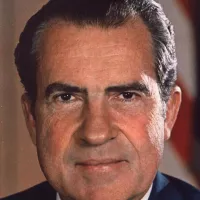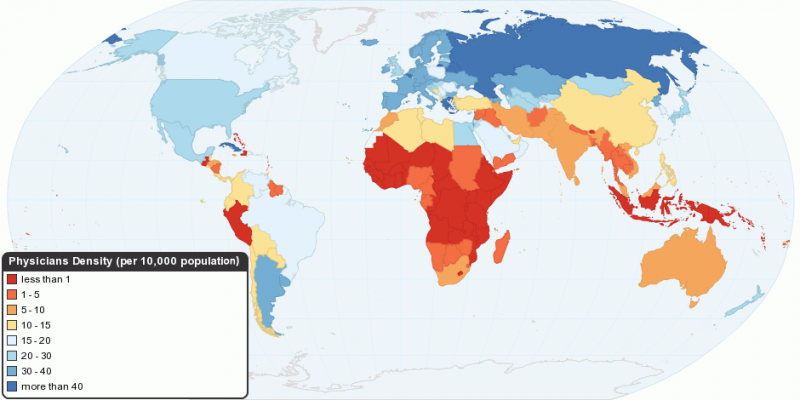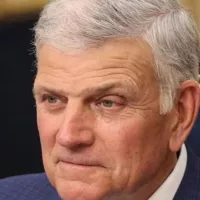Cancer is a collective term for diseases characterized by abnormal cell growth that can invade and spread to other parts of the body, unlike benign tumors. Symptoms can include lumps, abnormal bleeding, persistent cough, unexplained weight loss, or changes in bowel habits, although these can stem from other causes too. There are over 100 different types of cancer that affect humans.
1950: Decline in cancer death rate
Between 1950 and 2005, the cancer death rate (adjusting for size and age of the population) declined by five percent.
1971: War on Cancer declared by US President Richard Nixon
US President Richard Nixon declared the "War on Cancer" in 1971.
1975: Trends in childhood cancer in the United States
Between 1975 and 2002 in the United States, rates of childhood cancer increased, and death from childhood cancer decreased by half between 1975 and 2010.
1978: Childhood Cancer Rates in Europe
Between 1978 and 1997 in Europe, rates of childhood cancer increased by 1.1% per year.
1978: Susan Sontag publishes Illness as Metaphor
Susan Sontag published "Illness as Metaphor" in 1978 while recovering from treatment for breast cancer, ridiculing the idea that cancer was caused by a bad attitude.
1990: Cancer Deaths Worldwide
In 1990, deaths from cancer were 5.8 million worldwide.
1990: Decrease in lung cancer death rates in men in the United States
Since 1990, lung cancer death rates in men in the United States have decreased due to decreases in smoking rates since the 1950s.
1997: Childhood Cancer Rates in Europe
Between 1978 and 1997 in Europe, rates of childhood cancer increased by 1.1% per year.
1997: Immunotherapy comes into use
Since 1997, a variety of therapies using immunotherapy to stimulate or help the immune system fight cancer have come into use.
2002: Trends in childhood cancer in the United States
Between 1975 and 2002 in the United States, rates of childhood cancer increased, and death from childhood cancer decreased by half between 1975 and 2010.
2004: Share of Health Expenditure Devoted to Cancer Treatment
Between the 1960s and 2004, the share of health expenditure devoted to cancer treatment in the US has remained close to 5%.
2005: Decline in cancer death rate
Between 1950 and 2005, the cancer death rate (adjusting for size and age of the population) declined by five percent.
2008: Cancer Diagnoses Worldwide
In 2008, approximately 12.7 million cancers were diagnosed worldwide, excluding non-melanoma skin cancers and other non-invasive cancers.
2010: Global Economic Costs of Cancer
As of 2010, the global total economic costs of cancer were estimated at US$1.16 trillion.
2010: Trends in childhood cancer in the United States
Between 1975 and 2002 in the United States, rates of childhood cancer increased, and death from childhood cancer decreased by half between 1975 and 2010.
2010: Cancer Deaths Worldwide
In 2010, nearly 7.98 million people died from cancer.
2012: Childhood Cancer Diagnoses
In 2012, approximately 165,000 children under the age of 15 were diagnosed with cancer.
2014: Meta-analysis finds no relationship between fruits and vegetables and cancer
A 2014 meta-analysis found no relationship between fruits and vegetables and cancer.
2014: Reviews on the effect of Vitamin supplements on cancer risk
In 2014, reviews concluded that vitamin supplements had no significant effect on cancer risk, while Vitamin D3 may decrease the risk of death from cancer, however concerns with the quality of the data were noted.
2015: Cancer statistics worldwide
In 2015, approximately 90.5 million people around the world were affected by cancer.
2015: IARC report on processed and red meat and cancer
In 2015, the IARC reported that eating processed meat (e.g., bacon, ham, hot dogs, sausages) and, to a lesser degree, red meat was linked to some cancers.
2015: Health care expenditure on cancer in the US
In 2015, the total health care expenditure on cancer in the US was estimated to be $80.2 billion.
2018: Global Cancer Statistics
Estimates for 2018 indicate that there were 18.1 million new cancer cases and 9.6 million deaths globally.
2019: Cancer deaths due to preventable risk factors
In 2019, approximately 44% of all cancer deaths, about 4.5 million deaths, were attributed to known preventable risk factors such as smoking, alcohol use, and high BMI, according to a systematic analysis.
2019: Increase in cancer cases and deaths worldwide
In 2019, there was a significant increase in annual cancer cases worldwide, with 23.6 million new cases and 10 million deaths, representing a 26% and 21% increase over the previous decade respectively.
2020: Leading causes of cancer deaths worldwide
As of 2020, the cancers causing the most deaths worldwide are lung cancer, colorectal cancer, liver cancer, stomach cancer and breast cancer.
2022: Study on Cancer Risk in Wild Mammals
A 2022 study explored cancer risk in non-domesticated zoo mammals, demonstrating that cancer is a ubiquitous disease of mammals and highlighting that cancer risk is not uniformly distributed among mammals.
2024: Equivalent of cancer global economic costs in 2024
In 2024, the global total economic costs of cancer were equivalent to US$1.67 trillion per year as of 2010.
Mentioned in this timeline
The United States of America is a federal republic located...

Books are a means of storing information as text or...

Richard Nixon the th U S President served from until...

War is defined as an armed conflict involving the organized...

Melanoma is a dangerous form of skin cancer arising from...

Health care encompasses the prevention diagnosis treatment and management of...
Trending
22 minutes ago Sarkisian, Kiffin coaching rumor approaches differ; Desmond Howard mentioned in Nemo's notes.
22 minutes ago Emily Finn, 18, Sayville Teen, Killed by Ex-Boyfriend in Tragic Shooting Incident
1 hour ago Pope Leo Visits Mosque, Lebanon, and Turkey Seeking to Bridge Christian Divide.

1 hour ago Chase Rice Announces Touring Break After 13 Years for a Major Career Move.

1 hour ago JO1 Makes History as First Japanese Group at Jingle Ball and New TVCM

1 hour ago Advent Calendar Craze: Adults Seek Food-Focused Delights and Score Black Friday Deals.
Popular
Aftyn Alyssa Behn is an American politician currently serving as...

William Franklin Graham III commonly known as Franklin Graham is...

Candace Owens is an American conservative political commentator and author...

XXXTentacion born Jahseh Dwayne Ricardo Onfroy was a controversial yet...

Marjorie Taylor Greene known as MTG is a U S...

Richard Branson is a prominent English business magnate best known...

